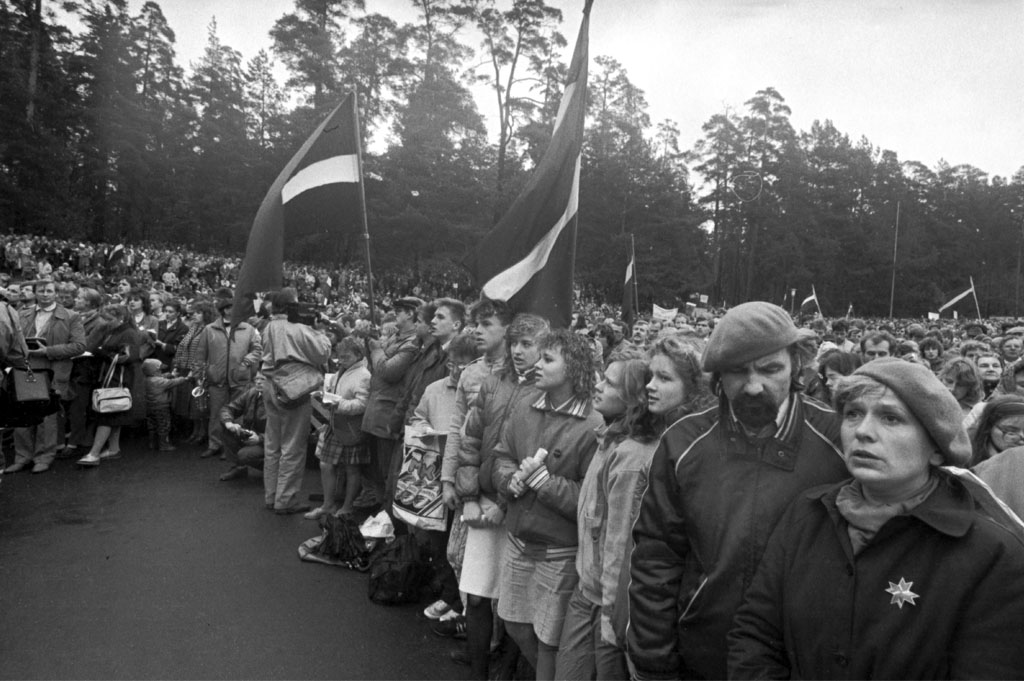19-08-16 // STRATEGIES FOR A NEWFOUND FREEDOM – INTERVIEW WITH GVIDO PRINCIS

Singing Revolution 1987, photo by Aivars Silins
Bernd Upmeyer interviewed Gvido Princis. Since 2012 he has been the director of the Office of the Riga City Architect – the Riga City Architect. He joined the Riga City Council in 2000 and his career was initially linked to the City Development Department of the Riga City Council. Three years later he was promoted to Director of the Detail Plan Unit and during an eight-year period he succeeded in becoming the Head of the City Development Department of the Riga City Council where he was responsible for reorganization of the entity for more than two and a half years. He holds the diploma in architecture issued by Riga Technical University, Faculty of Architecture and Urban Planning. The interview took place in August 2016.
Regaining Independence
Bernd Upmeyer: After the so-called peaceful “Singing Revolution”, starting in 1987, that called for Baltic emancipation of Soviet rule, Latvia declared the restoration of Independence of the Republic of Latvia in May 1990. What were the biggest challenges, struggles and difficulties, but also the greatest potentials that Latvian cities and especially Latvia’s capital Riga was facing and held during the first years of independence?
Gvido Princis: After 1990 a lot of soviet era development plans for Latvian cities, as well as Riga, literary collapsed because they mostly were based on immense extensive expansion and had no more support, resources or ideas to be carried on in the originally intended manner. As a result, new opportunities and challenges emerged in many areas of urban development and management when construction stalled, investments in different objects petered out and most of the USSR industrial giants established in Riga (e.g. VEF Radio Plant) closed down, giving space for a new development in the city center and on the left riverbank of the Daugava opposite Old Riga…
BU: What kind of new relationship models between public and private real estate owners and what kind of new mechanisms for the protection of planning, investments and public interests needed to be established exactly? Could you elaborate on this a bit more? What did and do, for example, such new models and mechanisms look like and what exactly has been done?
GP: The context requires explanation of the overall weakness of architecture and urban planning, and their limited impact on the urban development of Riga in general during the Soviet times. A typical example of this could be the closing of the Faculty of Architecture at the University of Latvia in 1951 largely inspired by Krushchev’s notorious decree on liquidation of excesses. Different areas of national economy, including the building sector with construction of housing, roads and bridges prevail in the urban development.
In regards to properties, it is also important to mention, e.g., how Ivars Godmanis (the first prime minister of independent Latvia) characterizes the peculiar way that Latvia introduced private land ownership: “We simply gave back to the previous owners what the Bolsheviks had taken from them.” I believe the key word here is “simply” which suggests that it was done without a clear vision of the future spatial development…
…the complete interview was published in MONU #25 on the topic of Independent Urbanism on October 17, 2016.
Title: Strategies for a Newfound Freedom
Project: Interview with Gvido Princis
Date: August 2016
Type: Commissioned interview
Topic: Independent Urbanism
Organizer: MONU
Status: Published
Publications: MONU #25, P. 104-113
Interviewer: Bernd Upmeyer